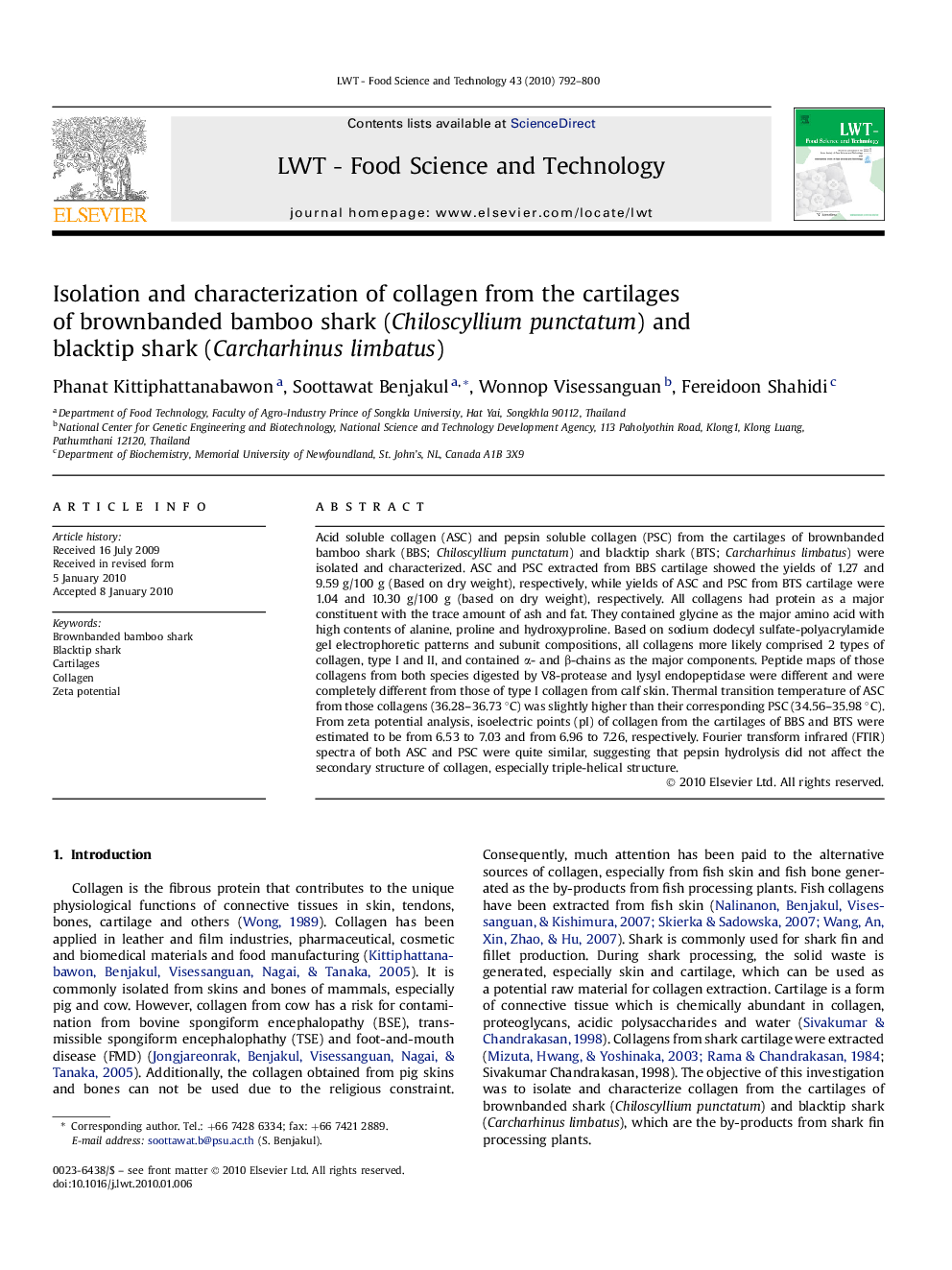| کد مقاله | کد نشریه | سال انتشار | مقاله انگلیسی | نسخه تمام متن |
|---|---|---|---|---|
| 4564317 | 1330934 | 2010 | 9 صفحه PDF | دانلود رایگان |

Acid soluble collagen (ASC) and pepsin soluble collagen (PSC) from the cartilages of brownbanded bamboo shark (BBS; Chiloscyllium punctatum) and blacktip shark (BTS; Carcharhinus limbatus) were isolated and characterized. ASC and PSC extracted from BBS cartilage showed the yields of 1.27 and 9.59 g/100 g (Based on dry weight), respectively, while yields of ASC and PSC from BTS cartilage were 1.04 and 10.30 g/100 g (based on dry weight), respectively. All collagens had protein as a major constituent with the trace amount of ash and fat. They contained glycine as the major amino acid with high contents of alanine, proline and hydroxyproline. Based on sodium dodecyl sulfate-polyacrylamide gel electrophoretic patterns and subunit compositions, all collagens more likely comprised 2 types of collagen, type I and II, and contained α- and β-chains as the major components. Peptide maps of those collagens from both species digested by V8-protease and lysyl endopeptidase were different and were completely different from those of type I collagen from calf skin. Thermal transition temperature of ASC from those collagens (36.28–36.73 °C) was slightly higher than their corresponding PSC (34.56–35.98 °C). From zeta potential analysis, isoelectric points (pI) of collagen from the cartilages of BBS and BTS were estimated to be from 6.53 to 7.03 and from 6.96 to 7.26, respectively. Fourier transform infrared (FTIR) spectra of both ASC and PSC were quite similar, suggesting that pepsin hydrolysis did not affect the secondary structure of collagen, especially triple-helical structure.
Journal: LWT - Food Science and Technology - Volume 43, Issue 5, June 2010, Pages 792–800